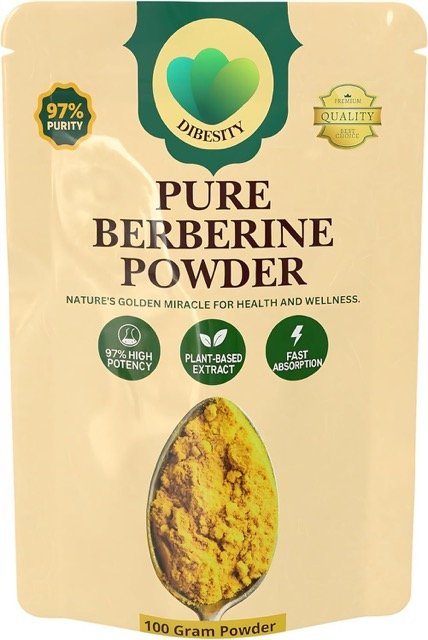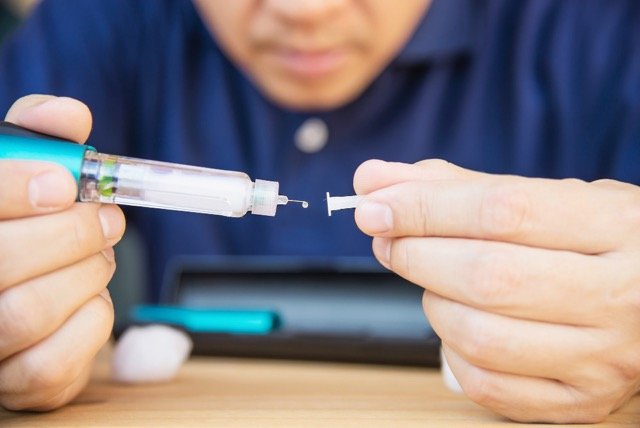Fexofenadine and pseudoephedrine (Telfast D) are available as a single combination pill. It is used in the treatment of allergic symptoms primarily allergic rhinitis by acting as a decongestant and antihistamine.
Fexofenadine and pseudoephedrine Uses:
-
Seasonal allergic rhinitis:
- It is approved for the treatment of allergic rhinitis symptoms in people 12 years of age and older, including flu-like symptoms, sneezing, rhinitis, itching, red and watery eyes, nasal congestion, and an itchy throat.
Fexofenadine and pseudoephedrine (Telfast D) Dose in Adults
Fexofenadine and pseudoephedrine (Telfast D) Dose in the treatment of Seasonal allergic rhinitis: Oral:
- Fexofenadine 60 mg/pseudoephedrine 120 mg 12 Hour:
- One tablet two times a day.
- Fexofenadine 180 mg/pseudoephedrine 240 mg 24 Hour:
- One tablet once a day.
Dose in Children:
Refer to adult dosing.
Pregnancy Risk Factor C
- Animal reproduction studies have shown adverse drug reactions and fetal outcomes.
- Talk to individual agents.
Use of pseudoephedrine and fexofenadine during breastfeeding
- Breast milk contains pseudoephedrine. It is unknown if breastmilk contains fexofenadine.
- Check with individual agents. The manufacturer suggests that breastfeeding mothers use the drug with caution.
Dose in Kidney Disease:
-
Fexofenadine 60 mg/pseudoephedrine 120 mg 12 Hour:
- CrCl ≥80 mL/minute:
- Adjustment in the dose is not necessary.
- CrCl <80 mL/minute:
- Initial: One tablet once a day.
- CrCl ≥80 mL/minute:
-
Fexofenadine 180 mg/pseudoephedrine 240 mg 24 Hour:
- Avoid its use.
Dose in Liver disease:
In the manufacturer’s labeling, dose adjustments have not been provided.
Side effects of Fexofenadine and pseudoephedrine (Telfast D):
See individual agents (fexofenadine and pseudoephedrine)
Contraindications to Fexofenadine and pseudoephedrine (Telfast D):
- Allergy to pseudoephedrine, fexofenadine and other drugs that stimulate your sympathetic system, or any other drug of similar structure or any component of this formulation
- Glaucoma with narrow angles
- Urinary retention
- Use within 14 days or concomitantly with MAO inhibitor treatment
- Coronary heart disease and severe uncontrolled hypertension
Warnings and precautions
-
Cardiovascular disease
- It is not recommended for severe hypertension or coronary artery disease.
- Patients with heart disease, including those with moderate to severe hypertension and those with ischemic heart diseases, should be cautious.
-
Diabetes:
- Diabetes mellitus patients should be cautious when using the drug.
-
Increased intraocular pressure
- Patients with glaucoma or elevated intraocular pressure should be cautious.
-
Prostatic hyperplasia/urinary block:
- Patients suffering from genitourinary obstruction or prostatic hyperplasia must be cautious when taking the drug.
-
Renal impairment
- Patients with impaired renal function should be cautious when taking the drug.
-
Seizure disorder:
- It can stimulate the central nervous system. Patients with epilepsy or seizure disorders should be cautious when using the drug.
-
Thyroid dysfunction:
- Patients suffering from thyroid dysfunction should be cautious about taking the drug.
Fexofenadine and pseudoephedrine: Drug Interaction
|
Risk Factor C (Monitor therapy) |
|
|
Acetylcholinesterase Inhibitors |
May diminish the therapeutic effect of Anticholinergic Agents. Anticholinergic Agents may diminish the therapeutic effect of Acetylcholinesterase Inhibitors. |
|
Alcohol (Ethyl) |
Alcohol's CNS depressing effect may be amplified by CNS depressants (Ethyl). |
|
Alizapride |
CNS depressants may have an enhanced CNS depressant impact. |
|
Alkalinizing Agents |
May raise the serum level of beta- and alpha-agonists (IndirectActing). |
|
Alpha1-Blockers |
May lessen the vasoconstriction caused by alpha/beta agonists. The vasodilation caused by Alpha1-Blocker may also be resisted by Alpha-/Beta-Agonists. |
|
Amantadine |
May strengthen an anticholinergic agent's anticholinergic action. |
|
Amezinium |
Antihistamines may intensify Amezinium's stimulant effects. |
|
Amphetamines |
May lessen antihistamines' sedative effects. |
|
Anticholinergic Agents |
Other anticholinergic agents' negative or hazardous effects might be amplified. |
|
AtoMOXetine |
May enhance the hypertensive effect of Sympathomimetics. AtoMOXetine may enhance the tachycardic effect of Sympathomimetics. |
|
Betahistine |
Antihistamines may diminish the therapeutic effect of Betahistine. |
|
Botulinum Toxin-Containing Products |
May enhance the anticholinergic effect of Anticholinergic Agents. |
|
Brexanolone |
CNS Depressants may enhance the CNS depressant effect of Brexanolone. |
|
Brimonidine (Topical) |
May enhance the CNS depressant effect of CNS Depressants. |
|
Bromopride |
May enhance the CNS depressant effect of CNS Depressants. |
|
Cannabidiol |
May enhance the CNS depressant effect of CNS Depressants. |
|
Cannabis |
May enhance the CNS depressant effect of CNS Depressants. |
|
Carbonic Anhydrase Inhibitors |
May increase the serum concentration of Alpha-/Beta-Agonists (Indirect-Acting). |
|
Chloral Betaine |
May worsen anticholinergic agents' harmful or hazardous effects. |
|
Chloroprocaine |
Alpha-/Beta-Agonists' hypertensive effects might be amplified. |
|
Chlorphenesin Carbamate |
May enhance the adverse/toxic effect of CNS Depressants. |
|
CNS Depressants |
May enhance the adverse/toxic effect of other CNS Depressants. |
|
Dimethindene (Topical) |
May enhance the CNS depressant effect of CNS Depressants. |
|
Doxofylline |
Sympathomimetics may enhance the adverse/toxic effect of Doxofylline. |
|
Doxylamine |
May enhance the CNS depressant effect of CNS Depressants. Management: The manufacturer of Diclegis (doxylamine/pyridoxine), intended for use in pregnancy, specifically states that use with other CNS depressants is not recommended. |
|
Dronabinol |
May enhance the CNS depressant effect of CNS Depressants. |
|
Eltrombopag |
May increase the serum concentration of OATP1B1/1B3 (SLCO1B1/1B3) Substrates. |
|
Erdafitinib |
P-glycoprotein/ABCB1 Substrates serum levels can rise. |
|
Erythromycin (Systemic) |
Fexofenadine serum concentration can rise |
|
Esketamine |
CNS depressants may have an enhanced CNS depressant impact. |
|
Gastrointestinal Agents (Prokinetic) |
The therapeutic benefit of gastrointestinal agents may be diminished by anticholinergic agents (Prokinetic). |
|
Gemfibrozil |
May raise the level of OATP1B1/1B3 (SLCO1B1/1B3) Substrates in the serum.Agents indicated as exceptions should be examined in separate drug interaction monographs. |
|
Glucagon |
Anticholinergic drugs may make glucagon's harmful or toxic effects worse. Particularly, there may be a higher chance of unfavourable gastrointestinal consequences. |
|
Grapefruit Juice |
Fexofenadine's serum concentration can drop. |
|
Guanethidine |
Could make sympathomimetics more arrhythmogenic. Guanethidine might make sympathomimetic drugs more hypertensive. |
|
HydrOXYzine |
CNS depressants may have an enhanced CNS depressant impact. |
|
Itopride |
Itopride's therapeutic impact may be diminished by anticholinergic drugs. |
|
Itraconazole |
Fexofenadine serum concentration can rise. |
|
Kava Kava |
CNS depressants' harmful or toxic effects could be increased. |
|
Ketoconazole (Systemic) |
Fexofenadine serum concentration can rise. |
|
Lofexidine |
CNS depressants may have an enhanced CNS depressant impact. Management: Separate drug interaction monographs go into further detail about the medications indicated as exceptions to this book. |
|
Lumacaftor |
May lower the level of P-glycoprotein/ABCB1 Substrates in the serum. The serum concentration of P-glycoprotein/ABCB1 Substrates may rise when using lumacaftor. |
|
Magnesium Sulfate |
CNS depressants may have an enhanced CNS depressant impact. |
|
MetyroSINE |
The sedative effects of metyroSINE may be strengthened by CNS depressants. |
|
Mianserin |
May strengthen an anticholinergic agent's anticholinergic action. |
|
Minocycline |
CNS depressants may have an enhanced CNS depressant impact. |
|
Mirabegron |
Anticholinergic drugs may make Mirabegron's harmful or hazardous effects worse. |
|
Mirtazapine |
The CNS depressing action of mirtazapine may be enhanced by CNS depressants. |
|
Nabilone |
CNS depressants may have an enhanced CNS depressant impact. |
|
Nitroglycerin |
Nitroglycerin absorption may be decreased by anticholinergic agents. |
|
P-glycoprotein/ABCB1 Inducers |
May lower the level of Pglycoprotein/ABCB1 Substrates in the serum. P-glycoprotein inducers may also further restrict the distribution of p-glycoprotein substrates to particular cells, tissues, and organs that have high levels of p-glycoprotein (e.g., brain, T-lymphocytes, testes, etc.). |
|
P-glycoprotein/ABCB1 Inhibitors |
Pglycoprotein/ABCB1 Substrates serum levels can rise. Additionally, p-glycoprotein inhibitors may improve the distribution of pglycoprotein substrates to particular cells, tissues, and organs where high levels of p-glycoprotein are present (e.g., brain, T-lymphocytes, testes, etc.). |
|
Piribedil |
Piribedil's CNS depressing effects may be enhanced by other CNS depressants. |
|
Pitolisant |
Pitolisant's therapeutic effects may be lessened by antihistamines. |
|
Pramipexole |
The sedative effects of pramipexole might be enhanced by CNS depressants. |
|
Ramosetron |
Ramosetron's constipating effects may be enhanced by anticholinergic drugs. |
|
Ranolazine |
P-glycoprotein/ABCB1 Substrates serum levels can rise. |
|
RifAMPin |
Fexofenadine's serum concentration can drop. Fexofenadine's serum levels may rise in response to RifAMPin. |
|
ROPINIRole |
CNS Depressants may enhance the sedative effect of ROPINIRole. |
|
Rotigotine |
CNS Depressants may enhance the sedative effect of Rotigotine. |
|
Rufinamide |
May enhance the adverse/toxic effect of CNS Depressants. Specifically, sleepiness and dizziness may be enhanced. |
|
Selective Serotonin Reuptake Inhibitors |
CNS Depressants may enhance the adverse/toxic effect of Selective Serotonin Reuptake Inhibitors. Specifically, the risk of psychomotor impairment may be enhanced. |
|
Solriamfetol |
Sympathomimetics may enhance the hypertensive effect of Solriamfetol. |
|
Spironolactone |
May diminish the vasoconstricting effect of Alpha-/Beta-Agonists. |
|
Sympathomimetics |
Could intensify the hazardous or harmful effects of other sympathomimetics. |
|
Tedizolid |
Could make sympathomimetics' hypertensive effects stronger. The tachycardic impact of sympathomimetics may be increased by tedizolid. |
|
Teriflunomide |
May raise the level of OATP1B1/1B3 (SLCO1B1/1B3) Substrates in the serum. |
|
Tetrahydrocannabinol |
May enhance the CNS depressant effect of CNS Depressants. |
|
Tetrahydrocannabinol and Cannabidiol |
May enhance the CNS depressant effect of CNS Depressants. |
|
Thiazide and Thiazide-Like Diuretics |
Anticholinergic Agents may increase the serum concentration of Thiazide and Thiazide-Like Diuretics. |
|
Topiramate |
Anticholinergic Agents may enhance the adverse/toxic effect of Topiramate. |
|
Trimeprazine |
May enhance the CNS depressant effect of CNS Depressants. |
|
Urinary Acidifying Agents |
May decrease the serum concentration of Alpha-/Beta-Agonists (Indirect-Acting). |
|
Verapamil |
Fexofenadine serum concentration can rise. |
|
Risk Factor D (Consider therapy modification) |
|
|
Antacids |
Fexofenadine's serum concentration can drop. Administration of fexofenadine and antacids containing aluminium or magnesium should be separated. Calcium carbonate, magnesium, and sodium bicarbonate are exceptions. |
|
Benzylpenicilloyl Polylysine |
Antihistamines may reduce Benzylpenicilloyl Polylysine's ability to diagnose. Management: Delay testing until systemic antihistaminic effects have subsided and discontinue systemic H1 antagonists for benzylpenicilloyl-polylysine skin testing. To determine whether permanent antihistaminic effects exist, a histamine skin test may be utilised. |
|
Benzylpenicilloyl Polylysine |
Alpha-/Beta-Agonists may lessen the Benzylpenicilloyl Polylysine's ability to diagnose. Management: To evaluate a patient's capacity to mount a wheal and flare response, consider using a histamine skin test as a positive control. |
|
Blonanserin |
CNS Depressants may enhance the CNS depressant effect of Blonanserin. |
|
Buprenorphine |
CNS Depressants may enhance the CNS depressant effect of Buprenorphine. Management: Consider reduced doses of other CNS depressants, and avoiding such drugs in patients at high risk of buprenorphine overuse/self-injection. Initiate buprenorphine patches (Butrans brand) at 5 mcg/hr in adults when used with other CNS depressants. |
|
Chlormethiazole |
May enhance the CNS depressant effect of CNS Depressants. Management: Monitor closely for evidence of excessive CNS depression. The chlormethiazole labeling states that an appropriately reduced dose should be used if such a combination must be used. |
|
Cocaine (Topical) |
May enhance the hypertensive effect of Sympathomimetics. Management: Consider alternatives to use of this combination when possible. Monitor closely for substantially increased blood pressure or heart rate and for any evidence of myocardial ischemia with concurrent use. |
|
Droperidol |
May enhance the CNS depressant effect of CNS Depressants. Management: Consider dose reductions of droperidol or of other CNS agents (eg, opioids, barbiturates) with concomitant use. Exceptions to this monograph are discussed in further detail in separate drug interaction monographs. |
|
Flunitrazepam |
CNS Depressants may enhance the CNS depressant effect of Flunitrazepam. |
|
Hyaluronidase |
Antihistamines may diminish the therapeutic effect of Hyaluronidase. Management: Patients receiving antihistamines (particularly at larger doses) may not experience the desired clinical response to standard doses of hyaluronidase. Larger doses of hyaluronidase may be required. |
|
HYDROcodone |
CNS Depressants may enhance the CNS depressant effect of HYDROcodone. Management: Avoid concomitant use of hydrocodone and benzodiazepines or other CNS depressants when possible. These agents should only be combined if alternative treatment options are inadequate. If combined, limit the dosages and duration of each drug. |
|
Linezolid |
May enhance the hypertensive effect of Sympathomimetics. Management: Reduce initial doses of sympathomimetic agents, and closely monitor for enhanced pressor response, in patients receiving linezolid. Specific dose adjustment recommendations are not presently available. |
|
Methotrimeprazine |
CNS Depressants may enhance the CNS depressant effect of Methotrimeprazine. Methotrimeprazine may enhance the CNS depressant effect of CNS Depressants. Management: Reduce adult dose of CNS depressant agents by 50% with initiation of concomitant methotrimeprazine therapy. Further CNS depressant dosage adjustments should be initiated only after clinically effective methotrimeprazine dose is established. |
|
Opioid Agonists |
CNS Depressants may enhance the CNS depressant effect of Opioid Agonists. Management: Avoid concomitant use of opioid agonists and benzodiazepines or other CNS depressants when possible. These agents should only be combined if alternative treatment options are inadequate. If combined, limit the dosages and duration of each drug. |
|
OxyCODONE |
CNS Depressants may enhance the CNS depressant effect of OxyCODONE. Management: Avoid concomitant use of oxycodone and benzodiazepines or other CNS depressants when possible. These agents should only be combined if alternative treatment options are inadequate. If combined, limit the dosages and duration of each drug. |
|
Perampanel |
May enhance the CNS depressant effect of CNS Depressants. Management: Patients taking perampanel with any other drug that has CNS depressant activities should avoid complex and high-risk activities, particularly those such as driving that require alertness and coordination, until they have experience using the combination. |
|
Pramlintide |
May enhance the anticholinergic effect of Anticholinergic Agents. These effects are specific to the GI tract. |
|
Secretin |
Anticholinergic Agents may diminish the therapeutic effect of Secretin. Management: Avoid concomitant use of anticholinergic agents and secretin. Discontinue anticholinergic agents at least 5 half-lives prior to administration of secretin. |
|
Serotonin/Norepinephrine Reuptake Inhibitors |
Alpha-/Beta-Agonists' tachycardic impact may be boosted. The vasopressor impact of alpha/beta agonists may be enhanced by serotonin/norepinephrine reuptake inhibitors. |
|
Sodium Oxybate |
May enhance the CNS depressant effect of CNS Depressants. Management: Consider alternatives to combined use. When combined use is needed, consider minimizing doses of one or more drugs. Use of sodium oxybate with alcohol or sedative hypnotics is contraindicated. |
|
Suvorexant |
CNS Depressants may enhance the CNS depressant effect of Suvorexant. Management: Dose reduction of suvorexant and/or any other CNS depressant may be necessary. Use of suvorexant with alcohol is not recommended, and the use of suvorexant with any other drug to treat insomnia is not recommended. |
|
Tapentadol |
May enhance the CNS depressant effect of CNS Depressants. Management: Avoid concomitant use of tapentadol and benzodiazepines or other CNS depressants when possible. These agents should only be combined if alternative treatment options are inadequate. If combined, limit the dosages and duration of each drug. |
|
Tolvaptan |
May increase the serum concentration of OATP1B1/1B3 (SLCO1B1/1B3) Substrates. |
|
Zolpidem |
CNS Depressants may enhance the CNS depressant effect of Zolpidem. Management: Reduce the Intermezzo brand sublingual zolpidem adult dose to 1.75 mg for men who are also receiving other CNS depressants. No such dose change is recommended for women. Avoid use with other CNS depressants at bedtime; avoid use with alcohol. |
|
Risk Factor X (Avoid combination) |
|
|
Aclidinium |
May enhance the anticholinergic effect of Anticholinergic Agents. |
|
Azelastine (Nasal) |
CNS Depressants may enhance the CNS depressant effect of Azelastine (Nasal). |
|
Bromperidol |
May enhance the CNS depressant effect of CNS Depressants. |
|
Cimetropium |
Anticholinergic Agents may enhance the anticholinergic effect of Cimetropium. |
|
Eluxadoline |
Anticholinergic Agents may enhance the constipating effect of Eluxadoline. |
|
Ergot Derivatives |
Alpha-/Beta-Agonists' hypertensive effects might be amplified. Alpha-/Beta-Agonists' vasoconstrictive effects may be strengthened by ergot derivatives. Exceptions: Mesylates of ergoloid; nicergoline |
|
Glycopyrrolate (Oral Inhalation) |
The anticholinergic effect of glycopyrrolate may be enhanced by anticholinergic agents (Oral Inhalation). |
|
Glycopyrronium (Topical) |
May strengthen an anticholinergic agent's anticholinergic action. |
|
Iobenguane Radiopharmaceutical Products |
Iobenguane radiopharmaceutical products' therapeutic effects may be lessened by alpha-/beta-agonists (indirect-acting). Treatment: Before administering iobenguane, stop taking any medications that could impede or interfere with catecholamine transport or uptake for at least five biological half-lives. After each dose of iobenguane, wait at least 7 days before administering these medications. |
|
Ipratropium (Oral Inhalation) |
May enhance the anticholinergic effect of Anticholinergic Agents. |
|
Levosulpiride |
Anticholinergic Agents may diminish the therapeutic effect of Levosulpiride. |
|
Monoamine Oxidase Inhibitors |
Might make alpha-/beta-agonists' hypertensive effects more pronounced (Indirect-Acting). Although this is the expected mode of action for linezolid, management guidelines are different from those for other monoamine oxidase inhibitors. Details can be found in linezolid-specific monographs. Exceptions: Tedizolid; linezolid. |
|
Orphenadrine |
CNS Depressants may enhance the CNS depressant effect of Orphenadrine. |
|
Oxatomide |
May enhance the anticholinergic effect of Anticholinergic Agents. |
|
Oxomemazine |
May enhance the CNS depressant effect of CNS Depressants. |
|
Paraldehyde |
CNS Depressants may enhance the CNS depressant effect of Paraldehyde. |
|
Potassium Chloride |
Anticholinergic Agents may enhance the ulcerogenic effect of Potassium Chloride. Management: Patients on drugs with substantial anticholinergic effects should avoid using any solid oral dosage form of potassium chloride. |
|
Potassium Citrate |
Anticholinergic Agents may enhance the ulcerogenic effect of Potassium Citrate. |
|
Revefenacin |
Anticholinergic Agents may enhance the anticholinergic effect of Revefenacin. |
|
Thalidomide |
CNS Depressants may enhance the CNS depressant effect of Thalidomide. |
|
Tiotropium |
Anticholinergic Agents may enhance the anticholinergic effect of Tiotropium. |
|
Umeclidinium |
May enhance the anticholinergic effect of Anticholinergic Agents. |
Monitoring parameters:
- Monitor the response to therapy, heart rate, and blood pressure.
- Closed monitoring may be required in patients with angina and ischemic heart disease.
How to administer Fexofenadine and pseudoephedrine?
Administer the tablets on an empty stomach as a whole without crushing or chewing them. Avoid taking the drug with food
Mechanism of action of Fexofenadine and pseudoephedrine (Telfast D):
Fexofenadine
- It affects the digestive system, blood vessels, and respiratory system's H1 receptors.
Pseudoephedrine:
- It acts directly on alpha-adrenergic receptors, causing vasoconstriction in the nasal and respiratory mucosa.
- It also causes dilation of the bronchial smooth muscle beta-adrenergic receptors.
Talk to individual agents.
International Brand Names of Fexofenadine and pseudoephedrine:
- Allegra-D 12 Hour
- Allegra-D 24 Hour
- Allegra-D
- Alcreas D
- Alerfedine D
- Alexia D
- Alexia-D
- Allegra D
- Allegra-D
- Allexofedrin D
- Altiva-D
- Dellegra
- Dinafex Plus
- Fenofex
- Fexet-d
- Fexo-d
- Fexofed
- Restaler D
- Rinolast D
- Sardin Plus
- Telfast D
- Telfast Decongestant
- Telfast Plus
- Telfast-D
- Telfex-d
- Vantydin
Fexofenadine and pseudoephedrine Brand Names in Pakistan:
Fexofenadine and pseudoephedrine Tablets 60 mg in Pakistan |
|
| Aloc D | Bosch Pharmaceuticals (Pvt) Ltd. |
| Axodine-D | Gray`S Pharmaceuticals |
| Fastec-D | Panacea Pharmaceuticals |
| Fenoxin Cf | Jawa Pharmaceuticals(Pvt) Ltd. |
| Fexet D | Getz Pharma Pakistan (Pvt) Ltd. |
| Fexo-D | Hilton Pharma (Pvt) Limited |
| Fexofin | Bio Labs (Pvt) Ltd. |
| Fexofin D | Bio Labs (Pvt) Ltd. |
| Fexota Plus | Orta Labs. (Pvt) Ltd. |
| Genfix-D | Genix Pharma (Pvt) Ltd |
| Regofast D | Regent Laboratories Ltd. |
| Sizzle D | Wilshire Laboratories (Pvt) Ltd. |
| Telfast-D | Sanofi Aventis (Pakistan) Ltd. |
| Telfex-D | Polyfine Chempharma (Pvt) Ltd. |



.jpeg)





